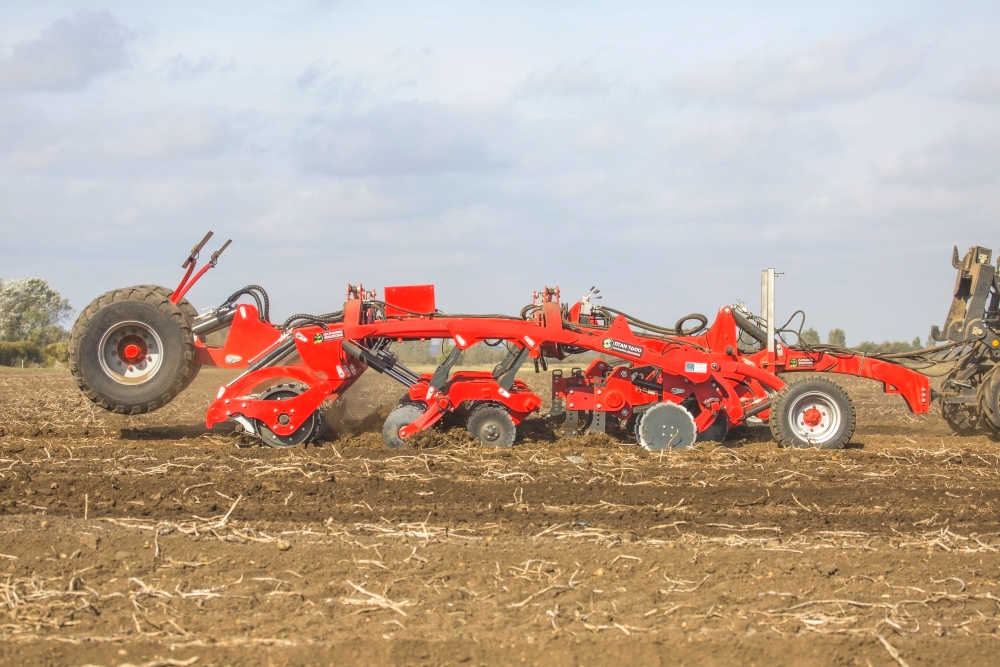Experts use soil pits to demonstrate how to improve cultivations at Tillage Live
 Growers will be able to see the benefits of variable depth cultivations first hand at Tillage Live, with fresh soil pits showing the impact of tines at different levels.
Growers will be able to see the benefits of variable depth cultivations first hand at Tillage Live, with fresh soil pits showing the impact of tines at different levels.
Precision crop production experts SOYL will demonstrate how soil structure is affected by standard cultivations at this year's event, to be held on Wednesday 16th September at Croft Farms near Darlington. SOYL's own variable depth cultivation system, Autodepth, will also be on show for growers to see how the potential damage caused by standard cultivations can be avoided.
David Whattoff, development manager, explains the importance of cultivating at different depths. 'To cultivate successfully, soil needs to be friable, but clay soils dry out more slowly than sandy soils, so in fields with variable soil types, cultivating at a universal depth often leads to compromise. In the worst cases, a cultivator can damage the soil by smearing the wet clay, creating compacted layers and impeding plant root growth, nutrient and moisture uptake. Ultimately, that's going to mean reduced yields.'
After running a cultivator over a plot at one level, the SOYL team will create holes in the ground so that growers can see where tines have passed through the soil at depths that may be appropriate, but also where they have gone too shallow and too deep.
This isn't an issue with Autodepth, and with the opportunity to improve soil structure as well as delivering cost savings, variable depth cultivation is being met with increasing levels of interest from arable growers. The control unit can be retrofitted to existing farm machines as well as being added to new purchases.
The Autodepth system maintains active control of cultivation depth during operation. To calculate cultivation depths for different soil textures, a detailed electrical conductivity survey is combined with an on-farm assessment to create a GPS plan. SOYL's patented variable depth control unit, developed in collaboration with Cultivating Solutions, will then calculate the required depth using a sensor on the cultivator frame, automatically adjust the hydraulic settings and lift or lower the machine accordingly. This alters the working depth of the cultivator to make sure soil is only disturbed where necessary and the ground is in top condition ready for the crop that will soon occupy it.
Plans for variable depth cultivations are based on the same electro conductivity scan map that is used for variable rate seeding, David adds. 'This approach ensures that depth changes are made as the soil type changes. Other features like tramlines can also be included on the cultivation plans, so they are effectively removed during cultivation.'
As well as improving soil structure and optimising fuel consumption, Autodepth increases the average work rate and provides accurate machine control in shallow soils. It is suitable for both sub-soilers and min-till.
Simon Parrington, SOYL's commercial director, said 'With SOYL's variable rate fertiliser and seed system now running on over 1 million hectares a year, demand is high for other precision techniques that improve the efficiency of crop production. Soil is our most precious resource and using the best systems available to manage it carefully makes complete sense.'
SOYL is also part of this year's Knowledge Trail. Growers can add to their NRoSO & BASIS points by visiting the team at stand 106 and working plot number 11.










